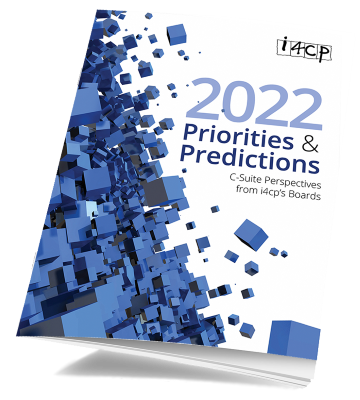Four Priorities for Total Rewards Leaders in 2022

 Total Rewards leaders say that talent attraction and retention—especially of top talent and employees in critical roles—is their singularly most pressing concern. The lingering COVID-19 pandemic and its unpredictable spikes and disruptive effects is on the minds of TR leaders as well.
Total Rewards leaders say that talent attraction and retention—especially of top talent and employees in critical roles—is their singularly most pressing concern. The lingering COVID-19 pandemic and its unpredictable spikes and disruptive effects is on the minds of TR leaders as well.
Another development presenting complexity for TR is shifting work models. In particular: evolving policies (including geographic differentials in compensation) associated with remote and hybrid work, return-to-workplace considerations, and strains on organizations, people, and resources resulting from headcount growth.
Also keeping TR leaders awake at night are worries about continuing supply chain disruptions, potential effects of inflation on organizational resources, TR budgets and plans/strategies, and digital transformations. All of this intensifies the pressure on TR functions to meet the broad demands of volatile business and talent markets and provide effective recommendations to senior leadership to support strategic business initiatives.
The following priorities and predictions are excerpted from our 2022 Priorities & Predictions report, based on guidance from our Total Rewards Leader Board.
1. Mitigating talent risk via continual listening and response
The impacts of ongoing talent scarcity on TR functions will be significant in 2022. Recent i4cp research has documented that organizations are indeed experiencing talent loss, and TR leaders predict that continued attrition, along with intense competition for talent, will drive critical staffing shortages. Organizations will look to their TR functions to identify and pull the right levers not only to attract top talent, but to engage and retain valued employees, too. Consequently, correctly discerning employee preferences—by means of sentiment surveys, program utilization, and other markers—and communicating those back to organizational leaders will be essential in making decisions about benefits offerings, pay and incentive policies (including pay equity, competitive compensation structures, geographic differentials, and counter-offering), and elements of flexible work.
2. Enabling organizations to support overall employee well-being
i4cp’s research has clearly shown that high-performance organizations are expanding the conventional view of employee wellness to one that encompasses holistic well-being (physical and emotional/mental health, along with financial, career, social/relational, and community health). Especially given the lingering health and economic implications of the COVID-19 pandemic—some of which remain to be fully understood—total rewards leaders are prioritizing ensuring that healthcare benefits include sufficient coverage for mental and emotional health and well-being.
3. Evolving total rewards to meet the changing expectations of the workforce
Evolving total rewards in an ultra-competitive talent landscape is one thing, but enabling an organization to compete and succeed in a new era of work models and worker expectations, especially regarding flexibility is something else. In addition to benefits offerings, compensation and paid leave policies will continue to be recalibrated. Specific to compensation, total rewards leaders will look at multiple considerations, such as: retention awards, sign-on bonuses, salary compression, geographic differentials, job/pay structures, long-term incentives, and more. Expanding personalized benefits offerings both provides employees with more choices that meet their changing needs and employers the opportunity to adjust spending on unused benefits.
4. Partnering across talent functions to drive competitive advantage
The past two years of unprecedented upheaval and change set new standards for how organizational culture, work/life balance, and total rewards are defined and experienced. Benefits that were considered first-rate in the pre-pandemic world (beautifully appointed office spaces, free meals, pet-friendly offices, gym memberships, special events tickets, etc.) no longer factor for many organizations. And what were once sought-after perks (remote work/expansive flexibility in work arrangements and models, home office expenses and internet reimbursement, etc.) are now standard for many employers.
Staying on top of what is important to current employees and potential candidates requires continual communication and information sharing across the organization. Total rewards leaders will continue to work in close collaboration with their colleagues in talent acquisition and other functional areas to ensure that their organizations are positioned to be employers of choice in 2022 and beyond.
For more insights from Total Rewards leaders, download our 2022 Priorities & Predictions report.




